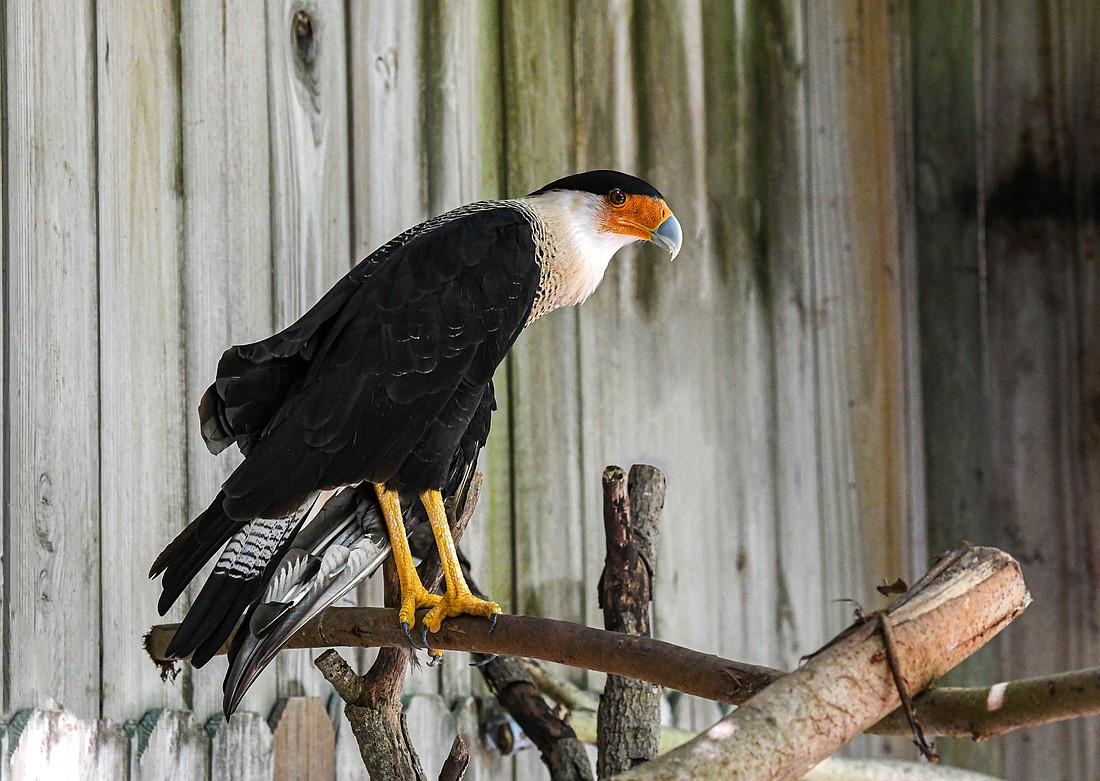- July 8, 2025
-
-
Loading

Loading

Striking in appearance, crested caracaras are an important, yet increasingly scarce, yearlong resident of Florida dry prairies. These large falcons are opportunistic feeders which eat both carrion (such as vultures), as well as live prey (such as hawks). They are also known to steal food from other species (such as eagles).
The featherless patch of skin on their face ranges in color from pale yellow to red, depending on whether they're relaxed or stressed. This bare skin serves the same purpose as the featherless head of most vultures: As they frequently eat carrion, having bare skin above the beak helps keep them clean. And though their talons are raptor-like, they lie flatter than most, making it easier for them to walk, even run. Indeed, caracaras spend a lot of time on the ground, even hunting on foot.
Whereas some bird species are habitat generalists that can thrive in many places, others, like the crested caracara, are habitat specialists. Though they've adapted, by necessity, to cattle ranches, caracaras are largely dependent on the open, treeless habitats of the dry prairie landscape. Therefore, the most serious threat to our endemic caracara population, a federally and state threatened species, is continued loss or degradation of their nesting and feeding habitat, due to development and agriculture. They're also vulnerable to illegal shooting and trapping. And, as they're attracted to roadsides, in search of carrion, car mortality is a threat.
To protect our native birds, we can use care when approaching scavengers feeding on carrion along highways. And, by understanding the importance of our few remaining Florida dry prairies to caracaras, and many other native species, we can choose to actively support ongoing land conservation efforts.
Save our Seabirds is a non-profit organization whose mission is to rescue and rehabilitate sick and injured birds, releasing as many as they can, while educating our community about avoiding injuries and preserving habitats.